City Lights is a 1931 American pre-Code silent romantic comedy film written, produced, directed by, and starring Charlie Chaplin. The story follows the misadventures of Chaplin's Tramp as he falls in love with a blind girl (Virginia Cherrill) and develops a turbulent friendship with an alcoholic millionaire (Harry Myers).
| City Lights | |
|---|---|
The Tramp and the Flower Girl | |
| Directed by | Charlie Chaplin |
| Produced by | Charlie Chaplin |
| Written by | Charlie Chaplin |
| Starring | Charlie Chaplin Virginia Cherrill Florence Lee Harry Myers Al Ernest Garcia |
| Music by | Charlie Chaplin
|
| Cinematography | Roland Totheroh Gordon Pollock |
| Edited by | Charlie Chaplin Willard Nico |
| Distributed by | United Artists |
Release date |
|
Running time | 87 minutes |
| Country | United States |
| Language | English |
| Budget | $1.5 million |
| Box office | $5 million |
Although sound films were on the rise when Chaplin started developing the script in 1928, he decided to continue working with silent productions. Filming started in December 1928 and ended in September 1930. City Lights marked the first time Chaplin composed the film score to one of his productions and it was written in six weeks with Arthur Johnston. The main theme, used as a leitmotif for the blind flower girl, is the song "La Violetera" ("Who’ll Buy my Violets") from Spanish composer José Padilla. Chaplin lost a lawsuit to Padilla for not crediting him.
City Lights was immediately successful upon release on January 30, 1931 with positive reviews and box office receipts of $5 million. Today, many critics consider it not only the highest accomplishment of Chaplin's career, but one of the greatest films of all time. In 1991, the Library of Congress selected City Lights for preservation in the United States National Film Registry as being "culturally, historically, or aesthetically significant". In 2007, the American Film Institute ranked it 11th on its list of the best American films ever made. In 1949, the critic James Agee called the film's final scene "the greatest single piece of acting ever committed to celluloid".
Screenplay
Citizens and dignitaries are assembled for the unveiling of a new monument to "Peace and Prosperity". After droning speeches the veil is lifted to reveal the Little Tramp asleep in the lap of one of the sculpted figures. After several minutes of slapstick he manages to escape the assembly's wrath to perambulate the city. He rebukes two newsboys who taunt him for his shabbiness, and while coyly admiring a nude statue has a near-fatal encounter with a sidewalk elevator.
The Tramp encounters the beautiful flower girl on a street-corner and in the course of buying a flower realizes she is blind; he is instantly smitten. Through an aural coincidence the girl mistakes her customer for the wealthy owner of a chauffeured automobile.
That evening the Tramp saves a drunken millionaire from suicide. The millionaire takes his new best friend back to his mansion for champagne, then (after another abortive suicide attempt) out for a night on the town. After helping the millionaire home the next morning, he sees the flower girl en route to her street-corner. The Tramp gets some money from the millionaire and catches up to the girl; he buys all her flowers and drives her home in the millionaire's car.
After the Tramp leaves, the flower girl tells her grandmother (Florence Lee) about her kind and wealthy friend. Meanwhile the Tramp returns to the mansion, where the millionaire – now sober – does not remember him and has him thrown out. Later that day, the millionaire is once more intoxicated and, seeing the Tramp on the street, invites him home for a lavish party. But the next morning history repeats itself: the millionaire is again sober and the Tramp is again out on his ear.
Finding that the girl is not at her usual street-corner, the Tramp goes to her apartment, where he overhears a doctor tell the grandmother that the girl is very ill: "She has a fever and needs careful attention." Determined to help, the Tramp takes a job as a street sweeper.
On his lunch break he brings the girl groceries while her grandmother is out selling flowers. To entertain her he reads a newspaper aloud; in it is a story about a Viennese doctor's blindness cure. "Wonderful, then I'll be able to see you," says the girl – and the Tramp is struck by what may happen should she gain her sight and discover that he is not the wealthy man she imagines. He also finds an eviction notice the girl's grandmother has hidden. As he leaves, he promises the girl that he will pay the rent.
The Tramp returns to work to find himself fired – he has been late once too often. A boxer convinces him to fight in a fake bout; they will "go easy" on each other and split the prize money. After the boxer flees after learning he is about to be arrested, he is replaced by a no-nonsense fighter who knocks the Tramp out despite the Tramp's creative and nimble efforts to keep out of reach.
The Tramp encounters the drunken millionaire a third time and is again invited to the mansion. The Tramp relates the girl's plight and the millionaire gives him money for her operation. Two burglars knock the millionaire out and flee with the rest of his money. The police find the Tramp with the money given him by the millionaire, who because of the knock on the head does not remember giving it. The Tramp evades the police long enough to get the money to the girl, telling her he will be going away for a time, but in due course he is apprehended and imprisoned.
Months later the Tramp is released. He goes to the girl's customary street corner but she is not there. We learn that the girl – her sight restored – now runs a busy flower shop with her grandmother. But she has not forgotten her mysterious benefactor, whom she imagines to be rich and handsome: when an elegant man enters the shop she wonders for a moment if "he" has returned.
The Tramp happens by the shop, where the girl is arranging flowers in the window. He stoops to retrieve a flower discarded in the gutter. After a brief skirmish with his old nemeses, the newsboys, he turns to the shop's window though which he suddenly sees the girl, who has been watching him without (of course) knowing who he is. At the sight of her he is frozen for a few seconds, then breaks into a broad smile. The girl is flattered and giggles to her employee: "I've made a conquest!" Via pantomime through the glass, she kindly offers him a fresh flower (to replace the crushed one he took from the gutter) and a coin.
Suddenly embarrassed, the Tramp starts to shuffle away, but the girl steps to the shop door and again offers the flower, which he shyly accepts. She takes his hand and presses the coin into it, but abruptly she stops; her smile turns to a look of puzzlement. She runs her fingers along his arm, his shoulder, his lapels, then catches her breath: "You?" The Tramp nods with an uncertain smile and asks, "You can see now?" The girl replies, "Yes, I can see now" and tearfully pulls his hand to her bosom. The uncertainty on the Tramp's face turns to joy as the film fades to black.
- Virginia Cherrill as a blind girl
- Florence Lee as her grandmother
- Harry Myers as an eccentric millionaire
- Al Ernest Garcia as his butler (credited as Allan Garcia)
- Hank Mann as a prizefighter
- Charlie Chaplin as A Tramp
Uncredited Cast
- Robert Parrish as newsboy
- Henry Bergman as Mayor and blind girl's downstairs neighbor
- Albert Austin as street sweeper/burglar
- Jean Harlow as extra in nightclub scene (cut from film)
Pre-production
Chaplin's feature The Circus, released in 1928, was his last film before the motion picture industry embraced sound recording and brought the silent movie era to a close. As his own producer and distributor (part owner of United Artists), Chaplin could still conceive City Lights as a silent film. Technically the film was a crossover, as its soundtrack had synchronized music, sound effects, and some unintelligible sounds that copied speech pattern films. The dialogue was presented on intertitles. Chaplin was first contacted by inventor Eugene Augustin Lauste in 1918 about making a sound film, but he never ended up meeting with Lauste. Chaplin was dismissive about "talkies" and told a reporter that he would "give the talkies three years, that's all." He was also concerned about how to adjust the Little Tramp to sound films.
In early 1928, Chaplin began writing the script with Harry Carr. The plot gradually grew from an initial concept Chaplin had considered after the success of The Circus, where a circus clown goes blind and has to conceal his handicap from his young daughter by pretending that his inability to see are pratfalls. This inspired the Blind Girl. The first scenes Chaplin thought up were of the ending, where the newly cured blind girl sees the Little Tramp for the first time. A highly detailed description of the scene was written, as Chaplin considered it to be the center of the entire film.
For a subplot, Chaplin first considered a character even lower on the social scale, a black newsboy. Eventually he opted for a drunken millionaire, a character previously used in the 1921 short The Idle Class. The millionaire plot was based on an old idea Chaplin had for a short in which two millionaires pick up the Little Tramp from the city dump and show him a good time in expensive clubs before dropping him back off at the dump, so when he woke up, the Tramp would not know if it was real or a dream. This was rewritten into a millionaire who is a friend of the Tramp when drunk but does not recognize him when sober.
Chaplin officially began pre-production of the film in May 1928 and hired Australian art director Henry Clive to design the sets that summer. Chaplin eventually cast Clive in the role of the millionaire. Although the film was originally set in Paris, the art direction is inspired by a mix of several cities. Robert Sherwood said that "it is a weird city, with confusing resemblances to London, Los Angeles, Naples, Paris, Tangiers and Council Bluffs. It is no city on earth and it is all cities."
On August 28, 1928, Chaplin's mother Hannah Chaplin died at the age of 63. Chaplin was distraught for several weeks and pre-production did not resume until mid fall of 1928. Psychologist Stephen Weissman has hypothesized that City Lights is highly autobiographical, with the blind girl representing Chaplin's mother, while the drunken millionaire represents Chaplin's father. Weissman also compared many of the film's sets with locations from Chaplin's real childhood, such as the statue in the opening scene resembling St. Mark's Church on Kennington Park Road and Chaplin referring to the waterfront set as the Thames Embankment.
Chaplin had interviewed several actresses to play the blind flower girl but was unimpressed with them all. While seeing a film shoot with bathing women in a Santa Monica beach, he found a casual acquaintance, Virginia Cherrill. Cherrill waved and asked if she would ever get the chance to work with him. After a series of poor auditions from other actresses, Chaplin eventually invited her to do a screen test. She was the first actress to subtly and convincingly act blind on camera due to her near-sightedness, and Cherrill signed a contract on November 1, 1928.
Principal photography
Filming for City Lights officially began on December 27, 1928, after Chaplin and Carr had worked on the script for almost an entire year. As a filmmaker, Chaplin was known for being a perfectionist; he was noted for doing many more "takes" than other directors at the time. Production began with the first scene at the flower stand where the Little Tramp first meets the Blind Flower Girl. The scene took weeks to shoot, and Chaplin first began to have second thoughts about casting Cherrill. Years later, Cherrill said, "I never liked Charlie and he never liked me." In his autobiography, Chaplin took responsibility for his on-set tensions with Cherrill, blaming the stress of making the film for the conflict. Filming the scene continued until February 1929 and again for ten days in early April before Chaplin put the scene aside to be filmed later. He then shot the opening scene of the Little Tramp waking up in a newly unveiled public statue. This scene involved up to 380 extras and was especially stressful for Chaplin to shoot. During this part of shooting, construction was being done at Chaplin Studios because the city of Los Angeles had decided to widen La Brea Avenue and Chaplin was forced to move several buildings away from the road.
Request Movie Now
Watch movie City Lights online on Amazon
Watch movie City Lights online
Watch The Movie On Prime
Welcome to Sajjanpur Full HD Movie Download

Bedardi Full HD Movie Download
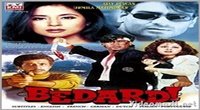
Patita (1953) Full HD Movie Download
.jpg)
Paise Ki Gudiya Full HD Movie Download

Film Hi Film Full HD Movie Download
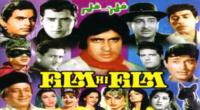
Tawaif Full HD Movie Download

Dus (2005) Full HD Movie Download
.jpg)
Apathbhandavudu Full HD Movie Download

Saptapadi Full HD Movie Download
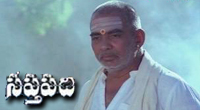
Action Veerudu 117 Full HD Movie Download
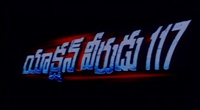
Harry Potter and the Order of the Phoenix Full HD Movie Download

Batman Begins Full HD Movie Download

Harry Potter and the Sorcerers Stone Full HD Movie Download

Troy Full HD Movie Download

Ariyatha Veethikal Full HD Movie Download
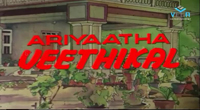
Josh Full HD Movie Download

Enga Ooru Paatukkaaran Full HD Movie Download

Edurinti Mogudu Pakkinti Pellam Full HD Movie Download
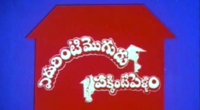
Alibaba Adbutha Deepam Full HD Movie Download
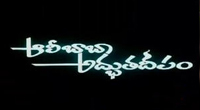
Lakshmi Kataksham Full HD Movie Download
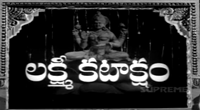
Sins-English Full HD Movie Download


Download latest Movie from bollywood
Request for Download movie City Lights
- Bollywood movies
- Latest Bollywood movies
- Download all bengali movies
- Download all bhojpuri movies
- Download all english movies
- Download all gujarati movies
- Download all hindi movies
- Download all kannada movies
- Download all malayalam movies
- Download all marathi movies
- Download all oriya movies
- Download all punjabi movies
- Download all tamil movies
- Download all telugu movies
- Bollywood action movies
- Bollywood adventure movies
- Bollywood animation movies
- Bollywood classical movies
- Bollywood comedy movies
- Bollywood crime movies
- Bollywood devotional movies
- Bollywood documentary movies
- Bollywood drama movies
- Bollywood family movies
- Bollywood fantasy movies
- Bollywood historical movies
- Bollywood history movies
- Bollywood horror movies
- Bollywood musical movies
- Bollywood mystery movies
- Bollywood mythological movies
- Bollywood patriotic movies
- Bollywood romance movies
- Bollywood romantic movies
- Bollywood sci-fi movies
- Bollywood social movies
- Bollywood spiritual movies
- Bollywood sports movies
- Bollywood suspense movies
- Bollywood thriller movies
- Bollywood war movies
- Hot actress list
- Hot gujarati actress list
- Hot tamil actress list
- Hot bhojpuri actress list
- Hot assam actress list
- Hot bihari actress list
- Hot jammu and kashmir actress list
- Hot gujarati actress list
- Hot haryana actress list
- Hot konkani actress list
- Hot marathi actress list
- Hot odia actress list
- Hot punjabi actress list
- Hot rajasthani actress list
- Hot kannada actress list
- Hot malayalam actress list
- Hot telugu actress list
- Hot tulu actress list
- Hot Actress list from Indian city
- Hot actress list from ahmedabad
- Hot actress list from alappuzha
- Hot actress list from bangalore
- Hot actress list from bangalore
- Hot actress list from bhopal
- Hot actress list from chandigarh
- Hot actress list from chennai
- Hot actress list from guwahati
- Hot actress list from hyderabad, india
- Hot actress list from indore
- Hot actress list from jaipur
- Hot actress list from kannur
- Hot actress list from kochi
- Hot actress list from kolkata
- Hot actress list from kollam
- Hot actress list from kottayam
- Hot actress list from kozhikode
- Hot actress list from lucknow
- Hot actress list from madurai
- Hot actress list from mangalore
- Hot actress list from mumbai
- Hot actress list from mysore
- Hot actress list from new delhi
- Hot actress list from patna
- Hot actress list from pune
- Hot actress list from thiruvananthapuram
- Hot actress list from thrissur
- Hot actress list from tiruchirappalli
- Hot actress list from vijayawada
- Hot actress list from visakhapatnam
- All Bollywood Movies
- Bollywood Celeb
- >Art Director
- >Audiography
- >Background Music
- >Banner
- >Choreographer
- >Cinematographer
- >Costume Designer
- >Dialogue Writer
- >Director
- >Distributor
- >Editor
- >Executive Producer
- >Hair Stylist
- >Lyricist
- >Music Director
- >Photographer
- >Playback Singers
- >Presenter
- >Producer
- >Production Company
- >Production Designer
- >Screenplay
- >Singer
- >Sound
- >Actor
- >Story Writer
- >Studio
- >Video Director
- >Miscellaneous
- >Publicity (pro)
- >Web Creator
- >Production Labs
- >Publicity Design
- >Publicity Stills
- >Writer
- >Miscellaneous Artists
- >Visual Effects
- >Reporter
- >Music Company
- >Shooting Studios
- >Picturised On
- >Line Producer
- >Co Producer
- >Asst Director
- >Casting Director
- >Cinematography
- >Choreography
- >Dialouge
- >Editing
- >Lyrics
- >Music
- >Story
- >Playback Singer Female
- >Playback Singer Male
- >Actor In A Comic Role (male/female)
- >Child Artiste
- >Ensemble Cast
- >Actor Popular Choice (male)
- >Actor Popular Choice (female)
- >Sa Re Ga Ma Pa Song Of The Year
- >Actor In Supporting Role
- >Actress In Supporting Role
- >Actor In Leading Role
- >Art Direction
- >Actress In Leading Role
- >Sound Recording
- >Costume Design
- >Special Effects
- >Action
- >Actor In A Negative Role
- >Lifetime Achievement Award
- >Cinematic Exellence (director)
- >Cinematic Exellence (male)
- >Cinematic Exellence (female)
- >International Male Icon
- >International Female Icon
- >Actor In A Supporting Role (male)
- >Actor In A Supporting Role (female)
- >Actor In A Comic Role
- >Playback Singer (male)
- >Playback Singer (female)
- >Most Promising Debut (female)
- >Most Promising Debut (male)
- >Most Promising Director
- >Sound Design
- >Lifetime Jodi
- >Marketed Film
- >Jury Award For Best Actor
- >Jury Award For Best Actress
- >Jury Award For Best Film
- >Jury Award For Best Director
- >Playback Singer(male)
- >Lifetime Acheivement Award (male)
- >Excellence Award
- >Jodi Award
- >Performer Of The Year
- >Presented By
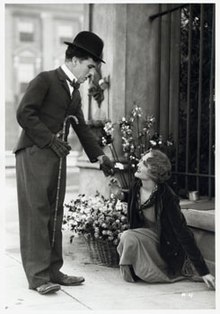 Story of movie City Lights :
Story of movie City Lights :